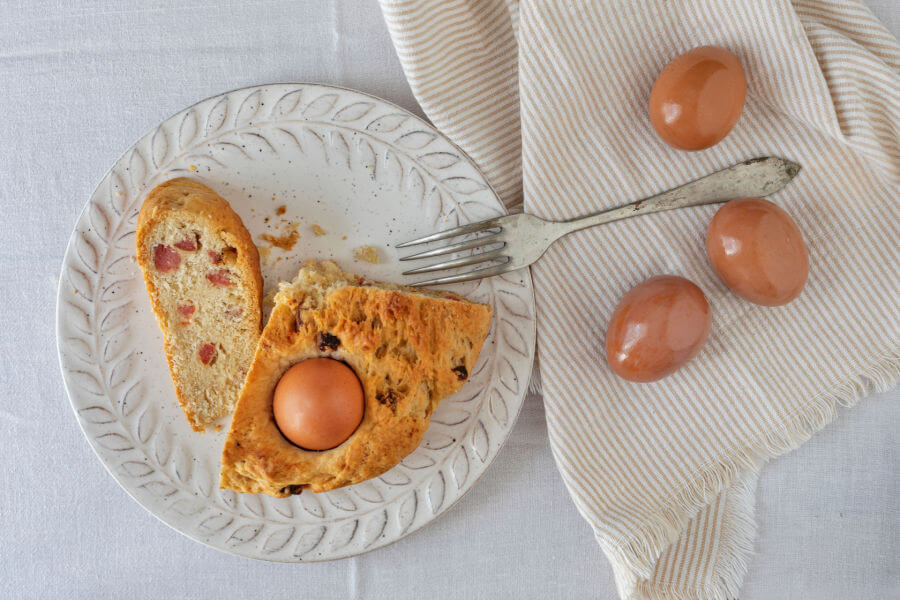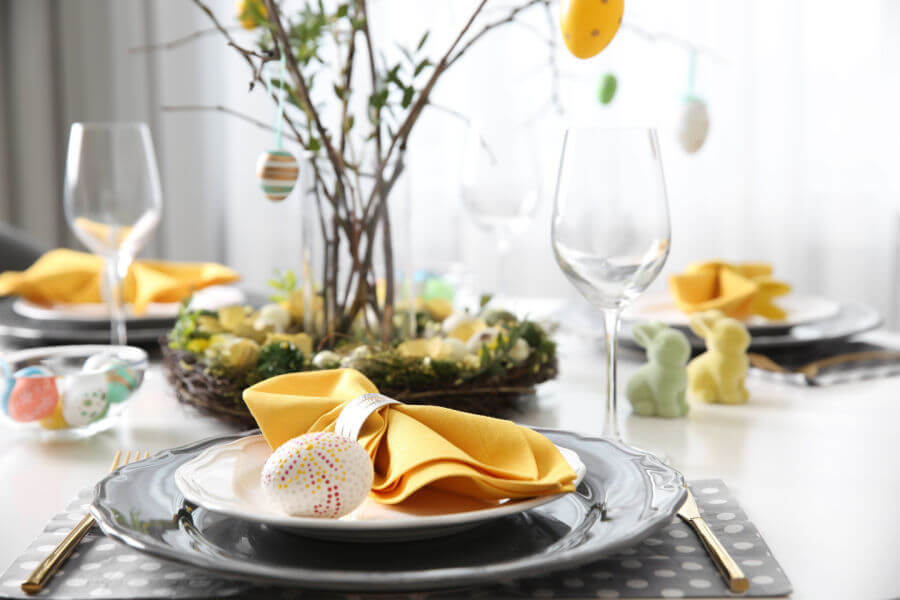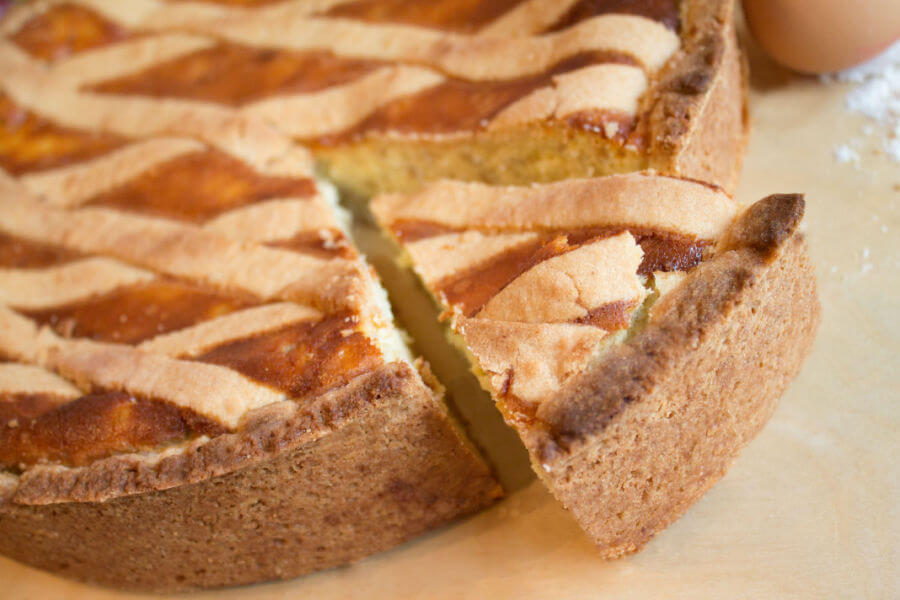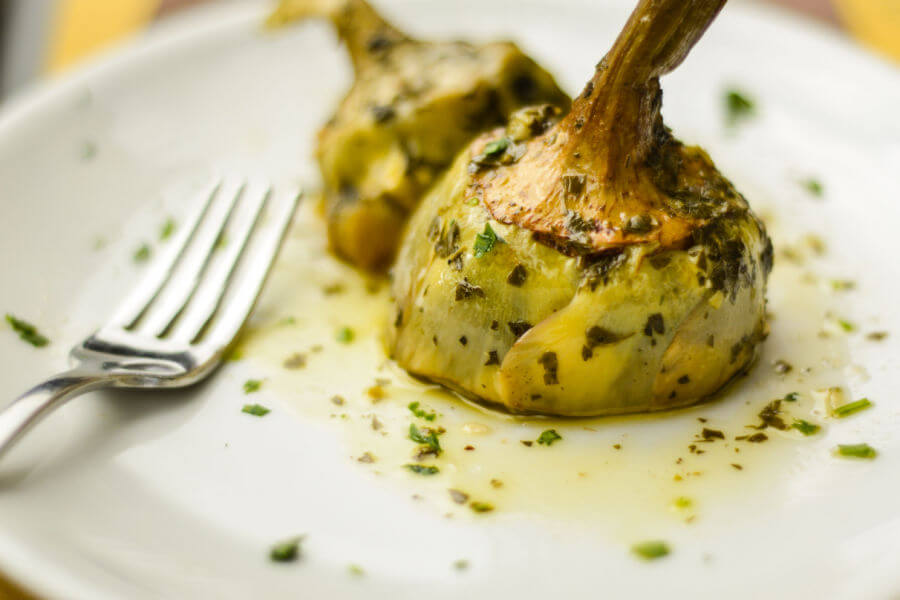Easter in Italy is a moment of joy in which friends and relatives gather to celebrate this feast with typical Italian Easter food.
If you want to spend Easter in Italy, you should definitely plan a trip to Rome and visit the Vatican Museums and the Sistine Chapel. On Easter Sunday you can attend in St Peter’s Square the celebration of Holy Mass held by the Pope and follow the Urbi et Orbi blessing.
As for many Italian festivities, Easter celebrations are all about having parties with friends and family, when people gather around the table to enjoy a traditional lunch with several courses that vary from Region to Region, that can last for hours.
But what is the typical Italian Easter food?

The eateries start with the first meal of the day, Breakfast. More a brunch than a typical breakfast this particular day. Normally an Italian breakfast would include something quick, maybe a croissant and cappuccino or an espresso with some toast or a couple of cookies to dunk. However Easter Sunday’s breakfast is a more elaborate, full and relaxing meal.
Easter brunch includes a variety of salty typical foods: Boiled eggs, Easter bread, the Casatiello (a spiced bundt cake typical of the southern regions and Naples, that includes chopped prosciutto, cheese and other yummy surprises), savory tarts, cold cuts and a Easter dove (kind of like a panettone, it has the shape of a dove and it’s spiced and glazed with almonds, quite delicious).
And chocolate, lots and lots of it. In fact it is the goat, especially for the youngsters. Egg hunts aside, the children will be entertained destroying the typical giant chocolate Easter Eggs before eating them, that reveal a special surprise on the inside, like small toys, gadgets and such.

Right after recovering from a delicious brunch, lunch begins. Carbs are the main event during lunch, however the first course meals vary from Region to Region, depending on each local traditions. For example, in Northern Italy, pasta dishes are made from scratch and are usually stuffed, like tortellini or the famous Agnolotti del plin, with a ground beef or veal stuffing, and served in broth. Other regions serve oven baked pasta, like Cannelloni or lasagne.
The main course for lunch is lamb, in most places, a typical Italian Easter food. Served in different ways, depending on where you are.
For example in central Italy one way to serve lamb is simply oven baked lamb chops with garlic and rosemary, with a side of twice baked potatoes.
In southern Italy it’s cooked in a stew with seasonal vegetables like asparagus and peas.
→ A fun fact, In Rome, oven-baked lamb is called “alla scottadito”, which means burning fingers, because you typically eat the hot lamb chops with your hands.
Anywhere you are in Italy, Lamb is a delicious meal served in so many different ways. Our favorite would be the typical lamb chops; simple, not so elaborate dishes are always the best choice!
One secret about cooking the perfect chops, maybe the more important, is to never over cook them, because the meat gets too stiff. To keep the meat tender and juicy 3 minutes of cooking per side are more than enough.
After the pasta dishes and second courses, sides are always a big hit. Anything from baked seasonal veggies to oven baked potatoes with rosemary and wild fennel seeds. But one of the best side dishes of all could be the one and only artichoke, the most beautiful flower of all! Cooked in different ways, artichokes are always a must on Easter. You can find it in oil, pickled or fried.
The addition of artichokes on the Italian tables during this time of year comes from an Italian Jewish tradition. For example, in Rome’s Jewish ghetto, the local kosher trattorias serve the typical artichokes “alla giudia”, baked with garlic and wild mint. A delicious recipe, easy to replicate. Which you can find at the bottom of this article, our treat to you!

To end the Easter feast, a selection of different types of desserts and pastries, that again, vary from town to town, region to region. Easter desserts are phenomenal everywhere in Italy, but they are a little extra delicious in Southern Italy.
Like in Naples, the Pastiera Napoletana is a delicious tart with whipped ricotta cheese and candied fruit, a real delicacy. But aside from the traditional desserts, you can always find the before mentioned easter doves and chocolate eggs.
After all the food, we dare you to eat at dinner! We dedicate supper to a few hours of unwinding to digest, with a nice digestive cup of tea. Because as tradition has it, round two is the next day, on Pasquetta!
Typical Italian Easter food is different from place to place, like traditions. But one thing absolutely every Italian family has in common, is to celebrate this day, surrounded by great food, loved ones and have fun.

To appreciate more some of the Italian dishes and their traditions, here is an unmissable recipe!
Stove-top baked Artichokes (Carciofi alla Romana) Serves 4:
INGREDIENTS
The ingredients are:
*And you will need a pot small enough to cook the artichokes standing, so that they don’t fall over. The seasoning is purely at leisure! A generous amount of herbs is always recommended.
PREPARATION
First thing’s first, clean the artichokes. We recommend looking up video tutorials on how to clean them the first time, because they can be quite tricky.
Once their cleaned and cut to perfection, put them in a bowl of cold water and lemon juice, to avoid brown spots and keep them nice and green and soft (leave the lemon wedges in there too. One thing Italian’s know how to do is avoid waste).
Leave them in for a few minutes. Then drain the artichokes, dry them off and start to spread the leafs using your thumbs, from the middle outwards to the ends. Keep in mind that for this recipe, the artichokes shouldn’t have needles in the center and are nice and tender, so if there are needles in the middle you should cut them off.
For the spices, we highly recommend creating a rub with part of all the condiments: thinly chopped garlic, parsley and pennyroyal, a few scoops of breadcrumbs, some olive oil a dash of salt and pepper and then spread the rub generously through the leaves and in the middle to leave them nice and moist. Or you could leave the garlic whole and at it to the pot during cooking time, whatever you prefer. Keep a small amount of herbs whole as well, to add to the pot later.
Final step is to put a generous amount of oil in the small pot, put in a few garlic cloves, if you feel like keeping them whole instead of chopping them in the rub, and add in some chili flakes (optional) as soon as it starts to sizzle, add in the seasoned artichokes, bottoms up and leave to bake for a few minutes. Add the remaining of the herbs, sprinkle some more salt and cover the pot. Leave to simmer at low heat for approximately 20 minutes or until the whole artichokes, from leaf to heart, are nice and soft.
Your artichokes are done to perfection! Put them in a small serving tray and drizzle all juices from the pot, for the finishing touches.
Buon Appetito!
you may be interested: